Summer, a time when the Romanian art scene usually takes a well-deserved break, is over. Artists and cultural figures who don’t have time off during this period are busy with artist residencies, camps, workshops, and a plethora of other arrangements for autumn when cultural spaces reopen across the whole country. Summer is also a wonderful occasion to bring contemporary art from the big cities to off contexts, and this summer’s indisputable cultural hotspot has certainly been the Black Sea resort of Eforie and the Seaside Archives project.
Being a genuine tour de force of artistic events, concerts, films, workshops, and contemporary art conferences, Eforie Colorat (“Colorful Eforie”) debuted in 2021 under the aegis of the Forumul Artelor Vizuale association and curated by Raluca Oancea. It has already established itself as the first center dedicated to contemporary art on the Romanian seaside and an alternative meeting point at the Black Sea.
Emil Cristian Ghiță and Alexandra Dumitrescu, the initiators of this program and seaside locals, wanted to bring back the untapped cultural potential of Eforie to the attention of the national public by initially reviving the Eforie Summer Garden. With the help of the Czech Centre, this initiative started in 2018 as Cinemascop, focusing on the semi-forgotten open-air cinema which, in recent years, has created new opportunities both for the public through the range of cultural services on offer, as well as a new exposure platform for up-and-coming and well-established artists.
Moreover, the efforts of this group of artists, anthropologists, and theorists focused in 2022, through the Seaside Archives project, coordinated by Raluca Oancea, on revealing the history of Eforie Sud, the oldest tourist resort on the Romanian coast. Eforie Sud is home to Lake Techirghiol, famous for its water and especially its mud, rich in mineral salts and trace elements with therapeutic effects. At the end of the 19th century, it was first named the health resort of Movilă – Techirghiol, after the lawyer and businessman of the same name, who invested in the local infrastructure. The villas and hotels he built contributed significantly to the area’s fame. Later, in the interwar period, the resort was called Carmen Sylva, the pen name of Queen Elisabeth of Romania. It was a refuge for the artists and writers of the time as well as a preferred destination for Romanian and international art lovers, who could visit the theatre, the music pavilion, or the local history museum. During the communist period, under the name Vasile Roaită, Eforie Sud became a popular resort for people of the working class, its urbanistic changes reflecting this fact. Today, the resort has preserved bits and pieces of all the historical eras it has witnessed.
The launch of cultural projects in Eforie sought to recall the region’s past by diversifying the local cultural scene with a multidisciplinary vision on contemporary art, which brought a number of prominent contemporary artists such as Dan Perjovschi, Lia Perjovschi, Matei Bejenaru, Cătălin Gheorghe, Irina Botea, Jon Dean, Iosif Kiraly to work for the first time in Eforie. The success of the two editions was reflected in the presence of a diverse audience, consisting of tourists and locals of all ages, as well as those passionate about contemporary art that wanted to get a taste of it during the summer.
This year, Eforie hosted several related events that included music, film, and exhibitions, as well as a historical and environmental element. All of these took place over the course of an intense and busy few months. This year’s festival develops into four interconnected sections, bringing together green topics and current world issues.
As Cinemascop Garden is the birthplace and the main venue of Eforie Colorat, an impressive selection of national and international short and feature films for the general public of all ages could not be missing this year either. There were countless screenings from the Short Film Breaks film festival, a unique concept that takes films out of cinemas and screens them in private companies, non-profit organizations, and other unconventional venues to showcase independent filmmakers. There were also featured productions promoted by the Caravana Filmului Românesc (“Romanian Film Caravan”), a project aimed at bringing back the national film heritage into the limelight, as well as titles from the French Institute’s collection and National Geographic documentaries. For nine weeks, Cinemascop’s schedule was split by weekdays, with international award-winning short films every Tuesday, Romanian films such as Octav or Happy Funerals every Wednesday, children’s productions on Thursdays, European films or documentaries on Fridays and Saturdays, and blockbusters such as Bohemian Rhapsody, Grand Budapest Hotel or Dune on Sundays.
The rehabilitation and reopening of the Summer Garden, with the largest projection screen on the seaside, is a commendable and highly welcomed effort that has provided a space for meetings and artistic endeavors of all kinds. Through its satellite, E T A J on Wheels, the Bucharest-based gallery E T A J artist-run Space was hosted at the Summer Garden in Eforie Sud, where three contemporary artists exhibited: Mircea Modreanu, Lucian Sandu Milea and Ana Cristina Toma made a thematic interactive artwork out of inflatable beach toys. There are also sculptures created by artists Ovidiu Toader and Radu Panait from waste and rubbish collected from the seafront as part of a performance by Emil Cristian Ghiță from last year’s edition.
The Summer Garden also hosted a series of concerts, including the Diana Miron and Laurențiu Coțac duo, experimental musicians that, in addition to classical instruments, bring field recordings and processed audio to their pieces. As part of the AgressiON/OFF segment presented in Eforie this year, which supports and promotes environmental awareness and community involvement in ecological activities, the two artists explored the entire resort, seeking to capture the specificity of the area. The two discovered abandoned buildings and ruins in Eforie, musically engaging with found objects and materials: rubbish dumped in forgotten places or metal poles sounding like bells. Their concert included several tracks made up of organic and artificial sounds recorded throughout the resort, combined with instrumental and vocal improvisations but also with the roar of the waves on the nearby beach.
Also, within the AgressiON/OFF part, the performance of Irina Botea Bucan and Jon Dean took place on the premises of Băile Reci, the space set up on the beach of Techirghiol Lake for mud bath treatments. The pitch-black mud, with its useful properties for treating various health problems and which has been used since the 19th century for its therapeutic benefits, and the salty, highly hypertonic water of Lake Techirghiol, attract thousands of tourists every year. However, the two artists were more interested in the fascinating mud as a social catalyst or connector. Inspired by landmark practices in the world of art and theatre, such as Augusto Boal with his famous invisible theatre, Irina and Jon’s playfully titled performance Nămol Party offered something akin to a workshop, a series of individual and collective exercises including poetry, sound and various actions designed to engage the audience on the lake beach. The performance starts right from the resort’s lobby, a sort of anteroom to the beach where you buy your entrance ticket as well as food or refreshments. Together with a group of artists and activists, but also seeking to involve the local public or non-artists, the two artists begin the first exercises of getting to know the participants: separating those present into two camps (similar to the childhood game Red Rover) and bringing them together in pairs who then enter the beach holding hands only with a light touch of the fingers. Here, participants are given writing materials and invited to take part in an observational exercise: to look around, listen and write down, without thinking too much, in the simplest words, what they see and hear. During this time, the artists placed a few microphones in the mud pools to capture the sound and unfurled a roll of paper on the beach – a blank canvas, ready to be filled with the audience’s art. In the end, the participants interacted with the mud, gathered around, and began to say, in a sort of impromptu chorus, the words they had written down: from profound observations to the funniest of insights, all set on the backdrop of the recorded mud sounds that were now playing over the resort’s speakers. Then they all turned to the roll of paper, on which they left their fingerprints, drew, wrote, and got creative with the mud that covered them, encouraging the secondary audience, the resort’s guests who did not participate in the actual performance, to take part in this group painting. And the response was overwhelmingly positive, resulting in an artwork full of names, initials, self-portraits, handprints, footprints, drawings, and inscriptions of all kinds made entirely of mud. Nămol Party was a collaborative art performance designed to spark a social discussion through a holistic approach to the politics of the body, perhaps even a first step in the development of a philosophy or theory of mud.
The mud seems to be literally the blood coursing through the veins of Eforie, keeping the area alive for centuries. And in this regard, the last but most ambitious part of the Eforie projects, the Seaside Archives, seeks to gather the rich history of the area into a Virtual Museum of the Romanian Seaside. Launched this year, the collaborative and transdisciplinary research brings together artists, theorists, anthropologists, philosophers, and biologists. The project will also spread to Constanța and 2 Mai over a two-year period, in order to build a rich archive of photographs and postcards, which will then be digitized and contextualized into a collection mapping the evolution of the Romanian seaside from the late 19th century to the communist and post-communist periods. Based on these documents, commissioned artists will produce artworks that act as an alternative to official history. The curator of the Seaside Archives, Raluca Oancea, has embarked on a large-scale research project, together with professors from the Bucharest National University of Arts (Raluca Paraschiv, Iosif Kiraly, Alexandra Croitoru), from the George Enescu National University of Arts in Iași (Matei Bejenaru, Cristian Nae, Cătălin Gheorghe, Cristina Moraru), from the University of Arts and Design in Cluj-Napoca (Răzvan Anton), with specialists in archiving photography and sound recordings from the Museum of the Romanian Peasant (Iris Șerban, Iuliana Dumitru), anthropologists specialized in the digitization of archives and community practices (Cristina Irian), specialists in heritage, biology, and ecology, as well as Kopacz Kund, professor at the Eszterházy Károly Catholic University (EKCU). According to the curator: “The archive will represent subjective history, an alternative to official narratives, in line with the interpretations offered by Michel Foucault or Hal Foster, philosophers and theorists of archives, as well as a way of linking multicultural communities on the seaside and an opportunity to introduce the philosophy of mud, an element of bodily and social connection and articulation between Eros and Thanatos”.
Although summer is over, the same can’t be said about the Eforie projects, which have already left their cultural mark on the seaside. The concerts, film nights, and artistic events will resume next year. In the meantime, the work on the Seaside Archives continues, and the results of this research will be discussed in workshops and conferences organized in cultural centers in Bucharest, Cluj-Napoca, or Iași, to which various artists involved in image and sound archives, internationally renowned archiving specialists, anthropologists, and biologists specialized in endemic flora will be invited. It is therefore worth keeping a close eye on the activities of the Forumul Artelor Vizuale association in the near future.
POSTED BY
Marina Oprea
Marina Oprea (b.1989) lives and works in Bucharest and is the current editor of the online edition of Revista ARTA. She graduated The National University of Fine Arts in Bucharest, with a background i...
marinaoprea.com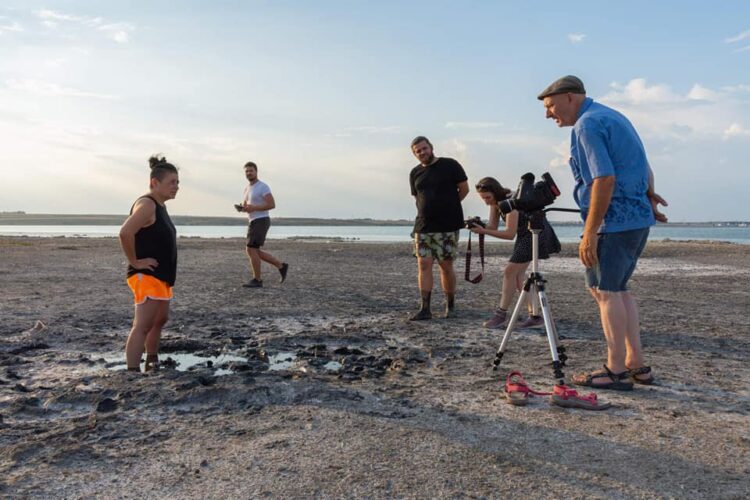
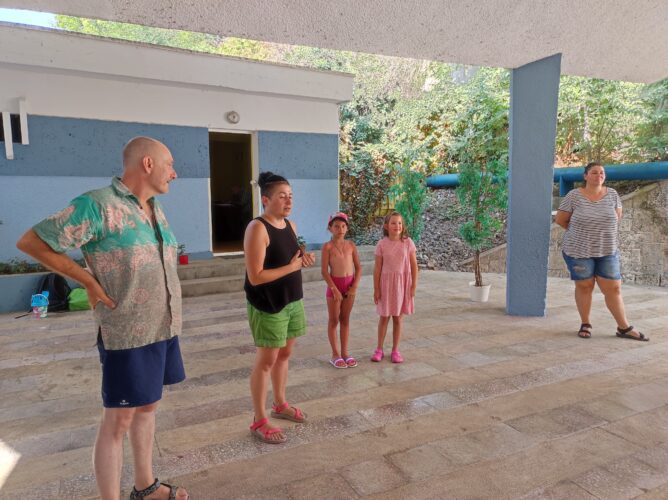
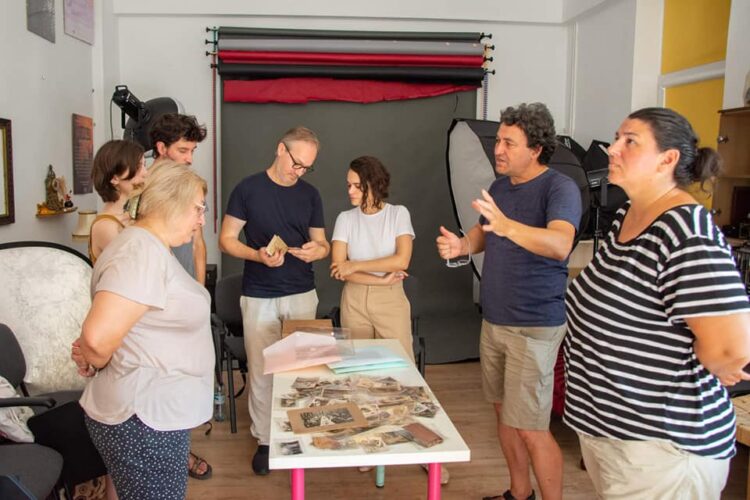
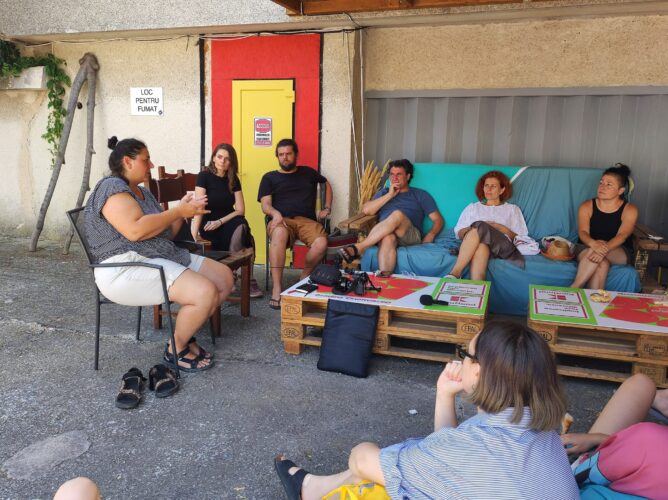
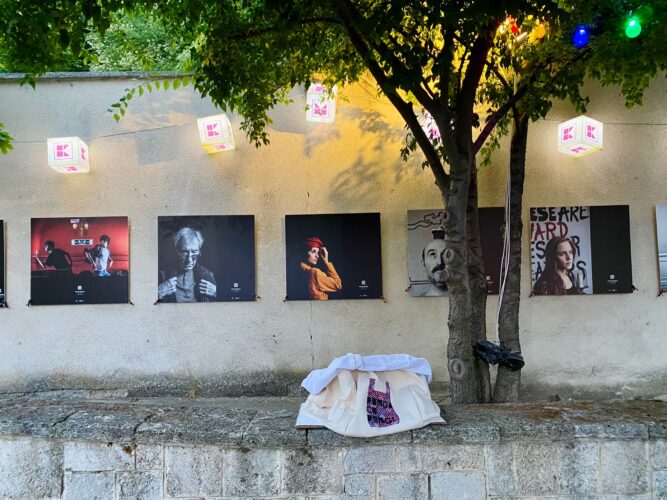
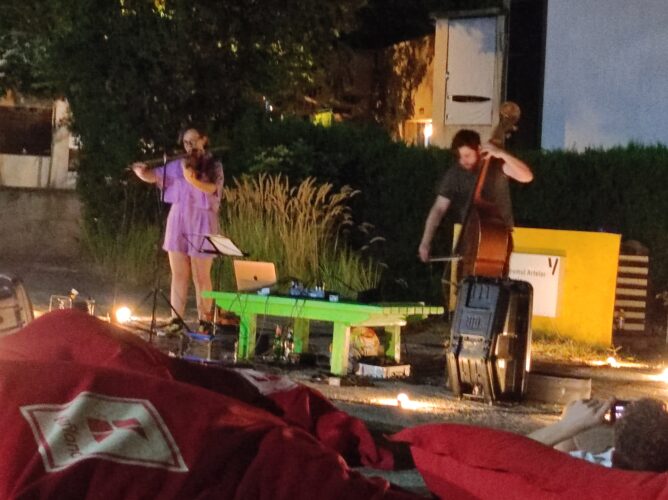
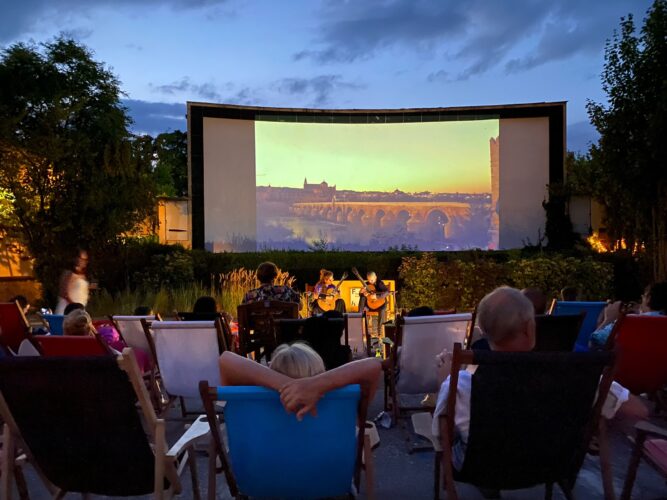
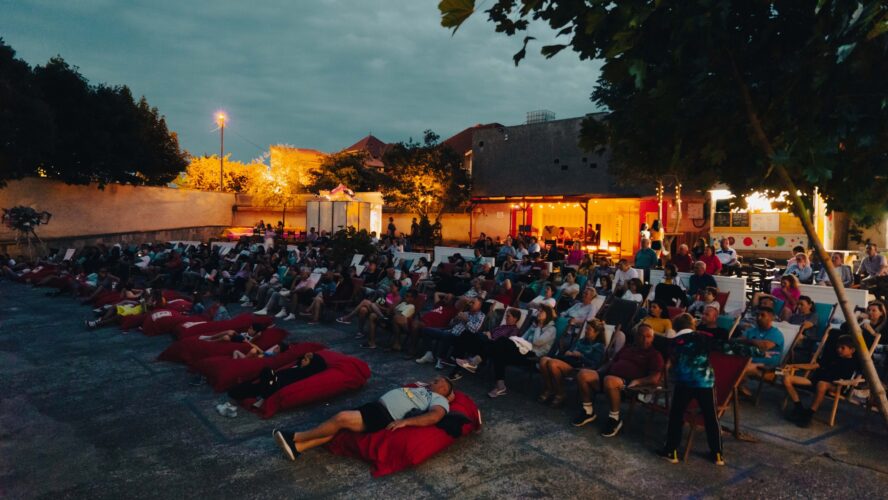
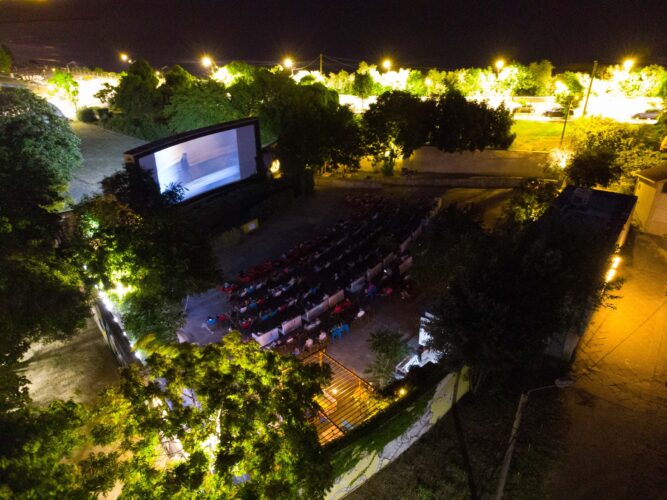
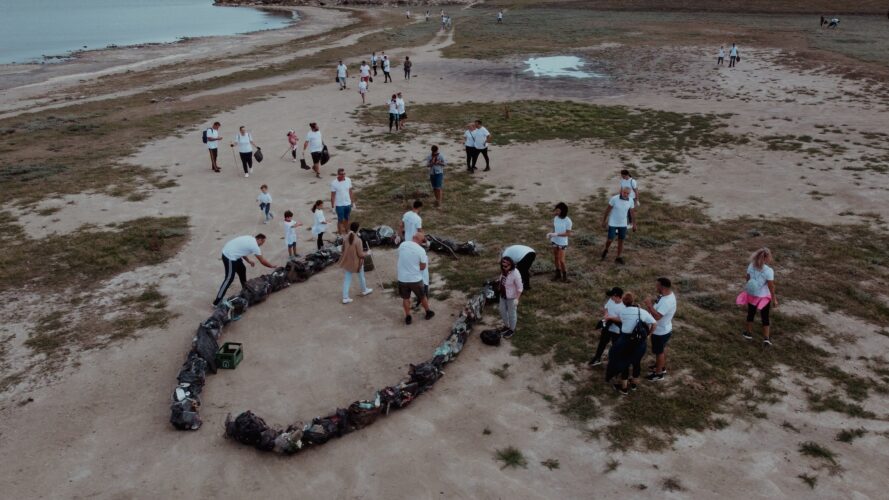
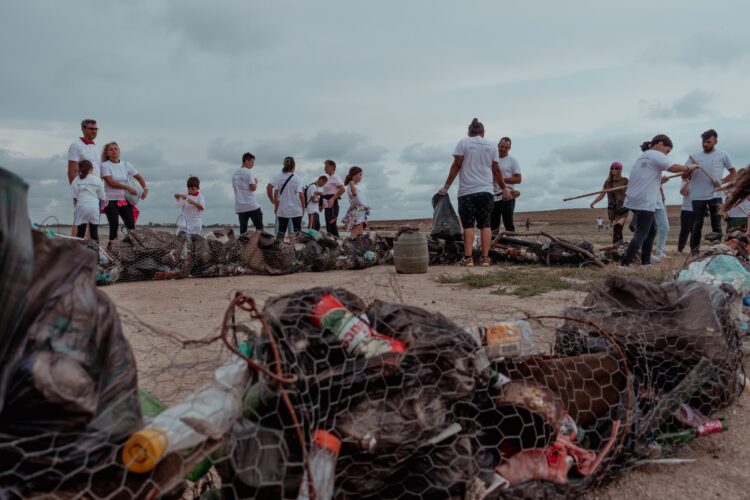
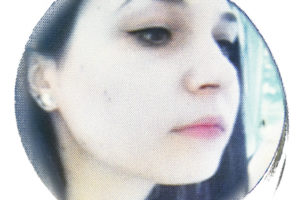
Comments are closed here.